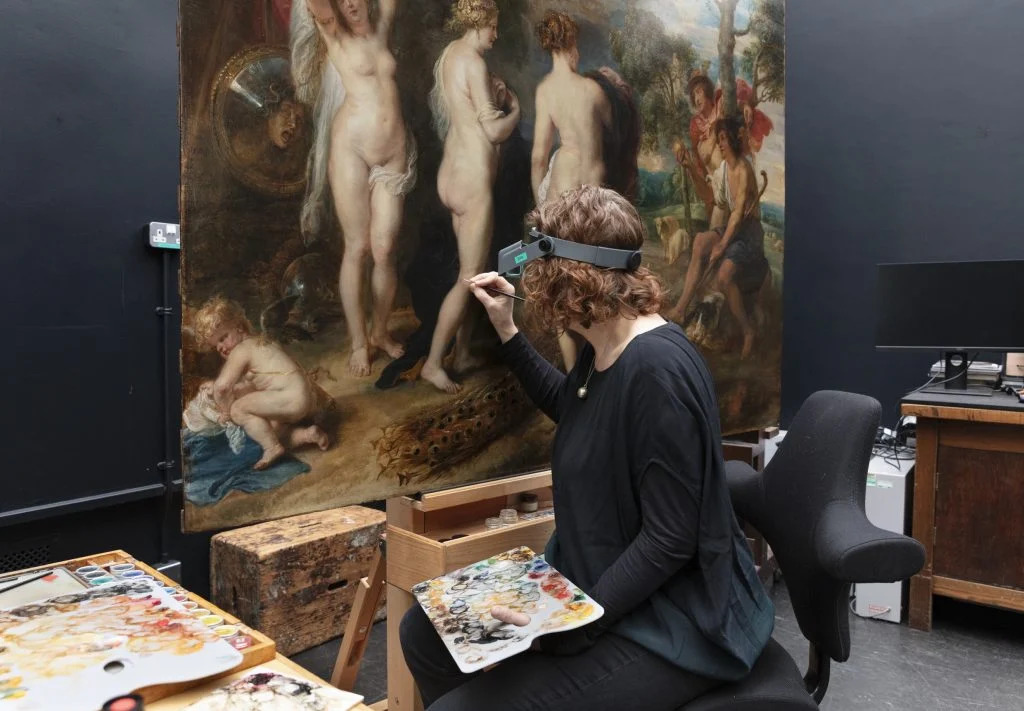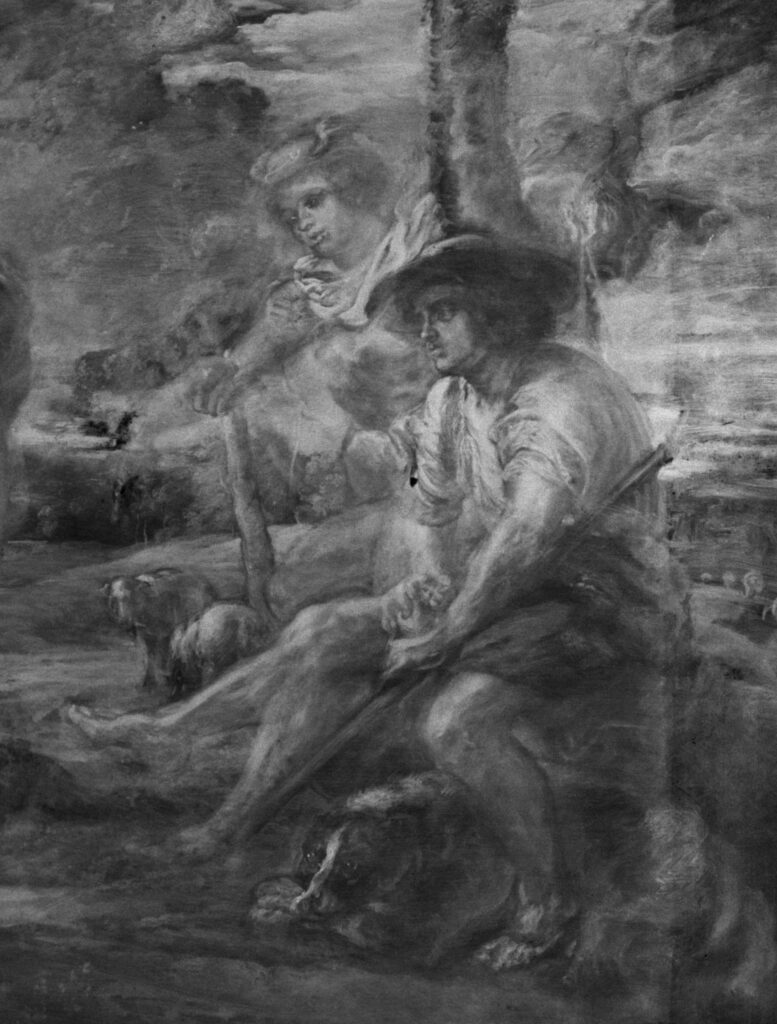A 14-month conservation of Peter Paul Rubens’s “The Judgement of Paris” (ca. 1632–35) by the National Gallery in London has uncovered secrets long hidden under layers of paint in the iconic masterpiece.
The late work by the Flemish master depicts a scene from the Greek myth of Paris. At the wedding of Thetis and Peleus, the goddess of discord Eris offered a golden apple to the fairest of the goddesses, tossing it amid the guests. Juno, Minerva, and Venus fought over the apple, and Paris, a shepherd, was roped in to decide the winner (he picked Venus).

Rubens returned to this scene in several paintings, honing his rendering of the nude females. Versions of “The Judgement of Paris” hang in the Prado in Madrid and the Gemäldegalerie Alte Meister in Dresden; the iteration in the National Gallery, acquired in 1844, represents one of the key and undisputedly autograph works. During conservation, the painting was subjected to scientific analysis using non-invasive techniques, including X-ray fluorescence and reflectance imaging spectroscopy. Conservators found that the canvas had undergone a number of restorations since Rubens’s death in 1640. Notably, work done between 1676 and 1721, likely by a French artist, significantly altered the painting’s composition.
The French intervention chiefly sought to underplay the work’s erotic quality without obscuring the nudity of the three goddesses. In Rubens’s original work, a third cherub could be seen tugging on Minerva’s shift, but the modification left only a single hand. Paris’s posture and clothing were also altered: Rubens had originally dressed the Greek hero in a broad hat with a shirt that covered his shoulders, while Mercury, positioned next to Paris, was depicted gesturing at the goddesses with his right arm.
A study of the painting’s cross-sections further indicated which modifications were made by Rubens and which by other artists and conservators. Rubens used pigments including smalt for the sky and pricey ultramarine for Venus’s cloak, while later alterations were made above a layer of varnish. Rubens, for instance, had made changes to the peacock’s neck and the position of Paris’s right arm as he held out the apple; the French artist added wings to a cherub by Venus’s side, transforming it into Cupid.

In this latest treatment, the French reworkings were partially removed but later minimally restored when the conservators decided to preserve the alterations as part of the painting’s history. The painting was cleaned, and its discolored varnish was removed and replaced to the level of the prior restoration done in 1941 by conservator William Addison Holder.
Retouching was done “sympathetically” by conservator Britta New, the museum noted in a statement, such that eagle-eyed viewers might still spot Rubens’s intentions. For instance, Paris’s originally lowered arm can still be discerned from the contours of his sleeve.
“Rubens is well known for constantly embellishing and improving his paintings as he worked,” said New, “but the added dimension of the subsequent reworking of ‘The Judgement of Paris’ made the treatment of the panel a stimulating challenge.”
In a final touch, the painting has been refitted in a 17th-century French Louis XIV frame, which was re-gilded in the 19th century. The museum purchased the frame especially for this painting, hoping to echo the major French reworking and harmonize with the other French-style frames that encase most of the Rubens works in its galleries. “The Judgement of Paris” has returned to view in Room 18 of the National Gallery.







